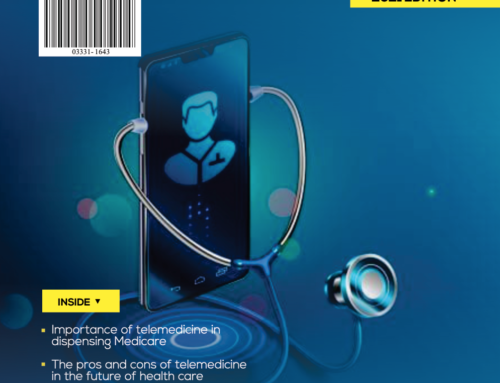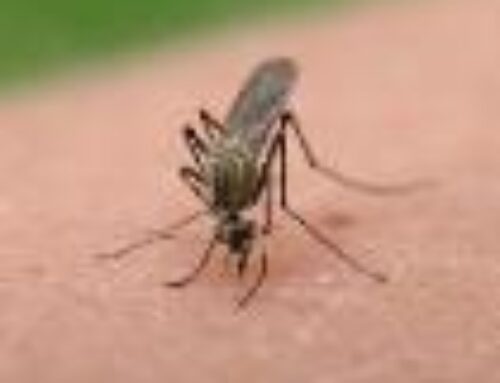fingers of his right hand (excluding the thumb) on blood agar plate. Then under running water, the hands were washed for
three minutes with toilet soap. The hands were dried with sterile wathman filter paper, and same right hand four fingers were
placed on the surface of another blood agar and the two plates incubated for 24hrs. On observation the first plate showed
abundant uncountable bacterial growth while the second plate had no bacterial growth. Hand washing should be done regularly
as it removes the bacterial load including pathogens and other dangerous organisms.
INTRODUCTION
Healthcare workers’ hands are the most common vehicle for the transmission of healthcare-associated pathogens from patient
to patient and within the healthcare environment.1 Ignac Semmelweis, a professor of Obstetrics (1822 – 1865) long discovered
the relation between puerperal fever and hands of health workers.
Hand washing, therefore, is a fundamental principle and practice in the prevention, control and reduction of healthcare and
community acquired infection2. According to a published guidance (MMWR Morb Mortal Wkly Rep. 2002), the term hand
washing is replaced by the new term hand hygiene, which includes hand cleansing, hand disinfecting, and surgical hand scrub.
Hand hygiene is considered to be the most effective measure to prevent microbial pathogen cross-transmission and healthcare-
associated infections3. This is evidenced by the fall in the incidence of multi drug resistant Staphylococcus aureus (MRSA)
bacteriaemias following the Clean your hand policy from the 1800s to resolve an obstetric morbidity and mortality occurrence.
Our work seeks to reinstate the intuitive benefits of this basic hygiene, hand washing, in maintaining health and disease
prevention. The parameter used in this work is the bacterial growth, before and after thorough hand washing with toilet soap.
MATERIALS AND METHOD
Materials used were: three blood agar plates, the hands of a volunteer medical student, toilet soap (lux), Water and sterile
Watman filter paper.
Method
1) The subject made an indenture with tips of the four fingers of his right hand (excluding the thumb) on the first blood
agar plate.
2) Using the toilet soap (lux), he washed his hands under an improvised running tap water for 3 minutes.
3) Then sterile Watman filter paper was used to dry his hands.
4) Using the same hand, he made another indenture on the second blood agar plate and the two blood agar plates were
incubated for 24 hours with a third unused plate as control.
RESULT
The first blood agar plate yielded heavy uncountable bacterial growth at the areas of finger indenture while the second plate
did not yield any bacterial growth (table1). The third blood agar plate used as control did not show any bacterial growth.
Table 1
THE EFFECT OF HANDWASHING ON BACTERIAL LOAD
Before hand washing After hand washing
Heavy uncountable growth No growth
DISCUSSION
Different studies have shown that the hand is constantly contaminated by microorganisms. A study showed that when 44
doctors whose hands were swabbed and cultured at entry to the ward and at exit, was compared with that of same doctors
hands washed with tap water and alcohol swab wash techniques, the following results were obtained:
There was significant contamination of doctors hands at entry (59:1%) and at exit (90.9%)5. Hand washing techniques reduced
contamination rates significantly. 76% with tap water wash and lowered further by16.5% with alcohol swab.
The result of this work is consistent with that of the above study of 44 doctors and this shows that hand washing/hand hygiene
is very critical and a tool in maintaining good health practice in any society.
Research has shown that bacteria left on hands after the use of contaminated soaps can be transferred to other surfaces.6,7
Therefore the use of solid (tablet) soap is advocated since soap contamination is mainly in liquid soap whose refillers are
difficult to wash. A disposable liquid soap equally can be used to prevent bacterial contamination associated with refilling a
liquid soap container.
The importance of the basic hygiene cannot be overemphasized and it is highly advocated for, at the following three occasions:
1. Before a healthcare worker sees a patient and in between patients to avoid cross-contamination amongst healthcare
workers and patients and also to reduce the incidence of nosocomial infection.
2. After visiting the toilet and any activity that can lead to contamination of our hands like after playing, shaking hands etc,
we should wash our hands.
3. Before eating we should equally wash our hands to prevent acquiring bacteria and other organisms that can be life
threatening.
Soap about the price of a bottle of Coca cola soft drink can preserve a life which is priceless from bacterial threat.
Acknowledgment
Our immense gratitude goes to the laboratory staff of the department of Medical Microbiology for their technical assistance.
REFERENCE
- Allegranzi B, Pittet D. Role of hand hygiene in healthcare-associatee infected prevention. J. Hosp Infect. 2009 Dec; 73(4): 305-
15. - Bjerke NB. The evolution: Handwashing to hand hygiene guidance. Crit Care Nurs Q. 2004 Jul-Sep; 27(3) 295-307.
- Whitby M, Pessoa-Silva C.L, McLaws M.L, Allegranzi B, Sax H, Larson E, Seto W.H; Donaldson L, Pittet D. Behavioural
Considerations for hand hygiene Practices: the basis building blocks. J. Hosp Infect. 2007 Jan; 65(1): 1-8. - Norman S.W, Christopher J.K.B, P. Ronan O’Connell (Eds) (2008). Bailey and Love’s Short Practice of Surgery. 25th ed. London
Holder Arnold. P. 43. - Paul R, Das N.K, Dutta R, Bandyopadhyay R, Banerjee A.K. Bacterial Contamination of the hands of doctors: a study in the
medicine and dermatology wards. Indian J dermatol venerol leprol 2011 May-Jun; 77(3): 307-13. - Sartor C. et al, Nosoconial Serratia Marcescens Infections Associated with Extrinsic Contamination of a Liquid Nonmedicated
Soap. Infection Control and Hospital Epidemiology. 2000, 21: 196-199. - Casewell M, Phillips I. Hands as route of Transmission for Klebsiella Species. British Medical Journal. 1977, 2: 1315-1317.





